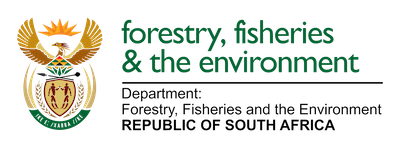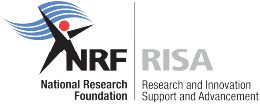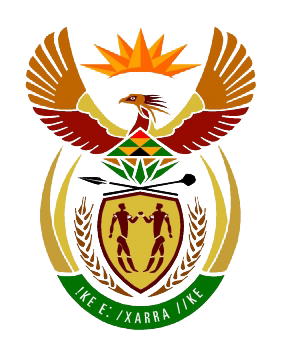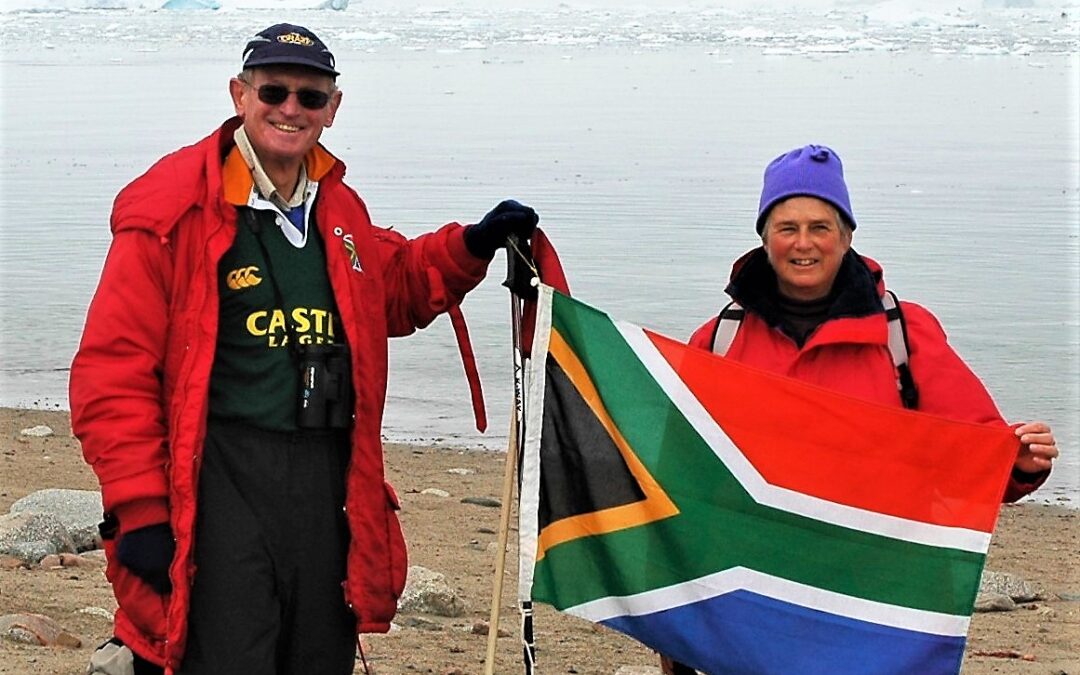
by Ria Olivier | Jun 19, 2020 | Antarctica, Discover, Legacy
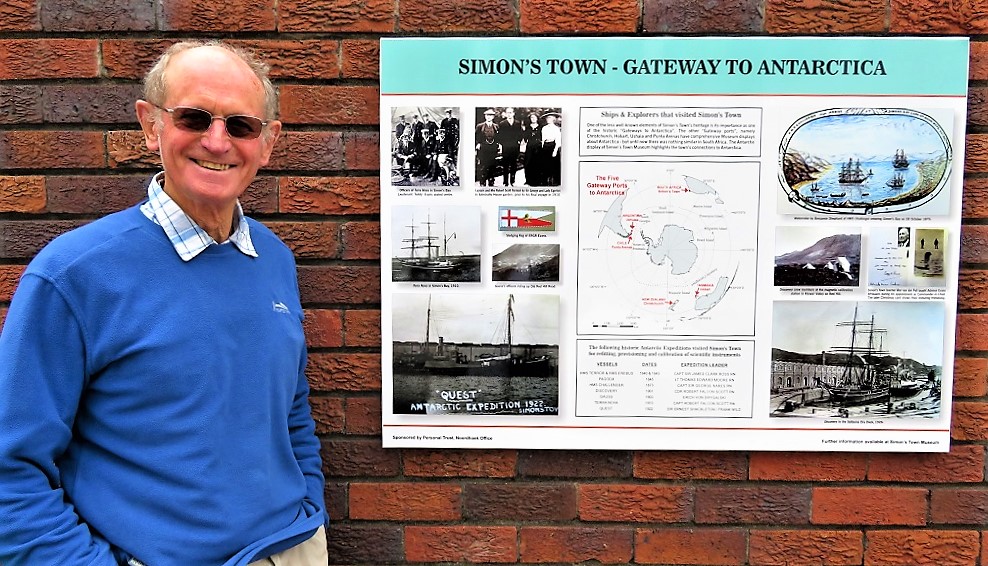 Sydney Cullis’s hobby turned out to be a bonus for the preservation of the Legacy of South Africa in the Antarctic region. ” It all started in 1993 when our son, James, was in Matric he had to produce a talk for one of the school societies and, as the Fiennes/Stroud “In the footsteps of Scott” expedition to cross Antarctica unsupported was in the news, he decided to choose it as his subject. To provide him with some guidance I started reading about the history of Antarctic exploration – and the more I read, the more fascinating I found it – and the more South African connections I came across. I was probably more receptive than I might otherwise have been as the first film I ever went to see (aged 6) was “Scott of the Antarctic” in 1948 and I have never forgotten the haunting soundtrack music of the Vaughan Williams’s 7th Symphony as they struggled up the Beardmore Glacier.
Sydney Cullis’s hobby turned out to be a bonus for the preservation of the Legacy of South Africa in the Antarctic region. ” It all started in 1993 when our son, James, was in Matric he had to produce a talk for one of the school societies and, as the Fiennes/Stroud “In the footsteps of Scott” expedition to cross Antarctica unsupported was in the news, he decided to choose it as his subject. To provide him with some guidance I started reading about the history of Antarctic exploration – and the more I read, the more fascinating I found it – and the more South African connections I came across. I was probably more receptive than I might otherwise have been as the first film I ever went to see (aged 6) was “Scott of the Antarctic” in 1948 and I have never forgotten the haunting soundtrack music of the Vaughan Williams’s 7th Symphony as they struggled up the Beardmore Glacier.
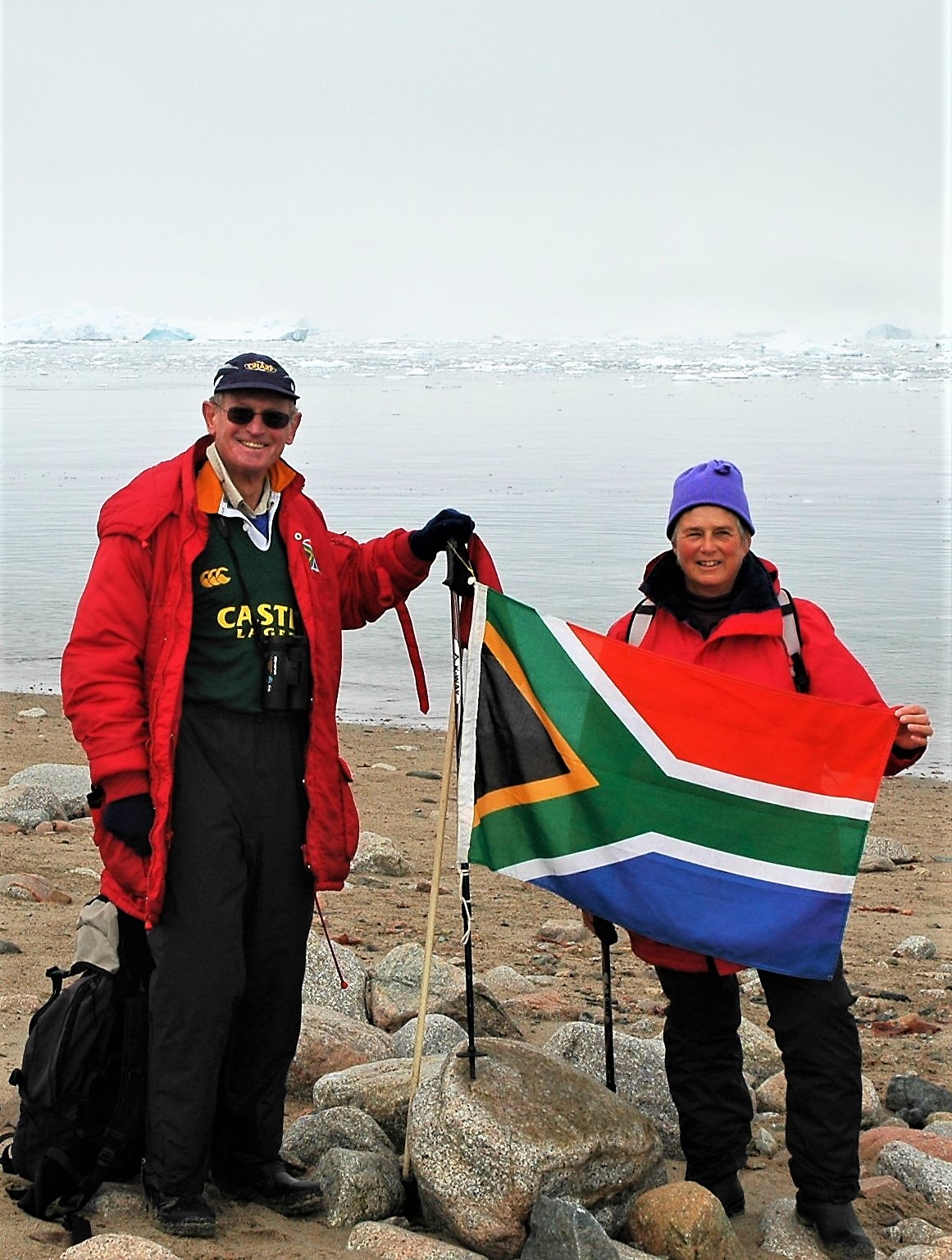
Sydney and Catherine at “furthest South”
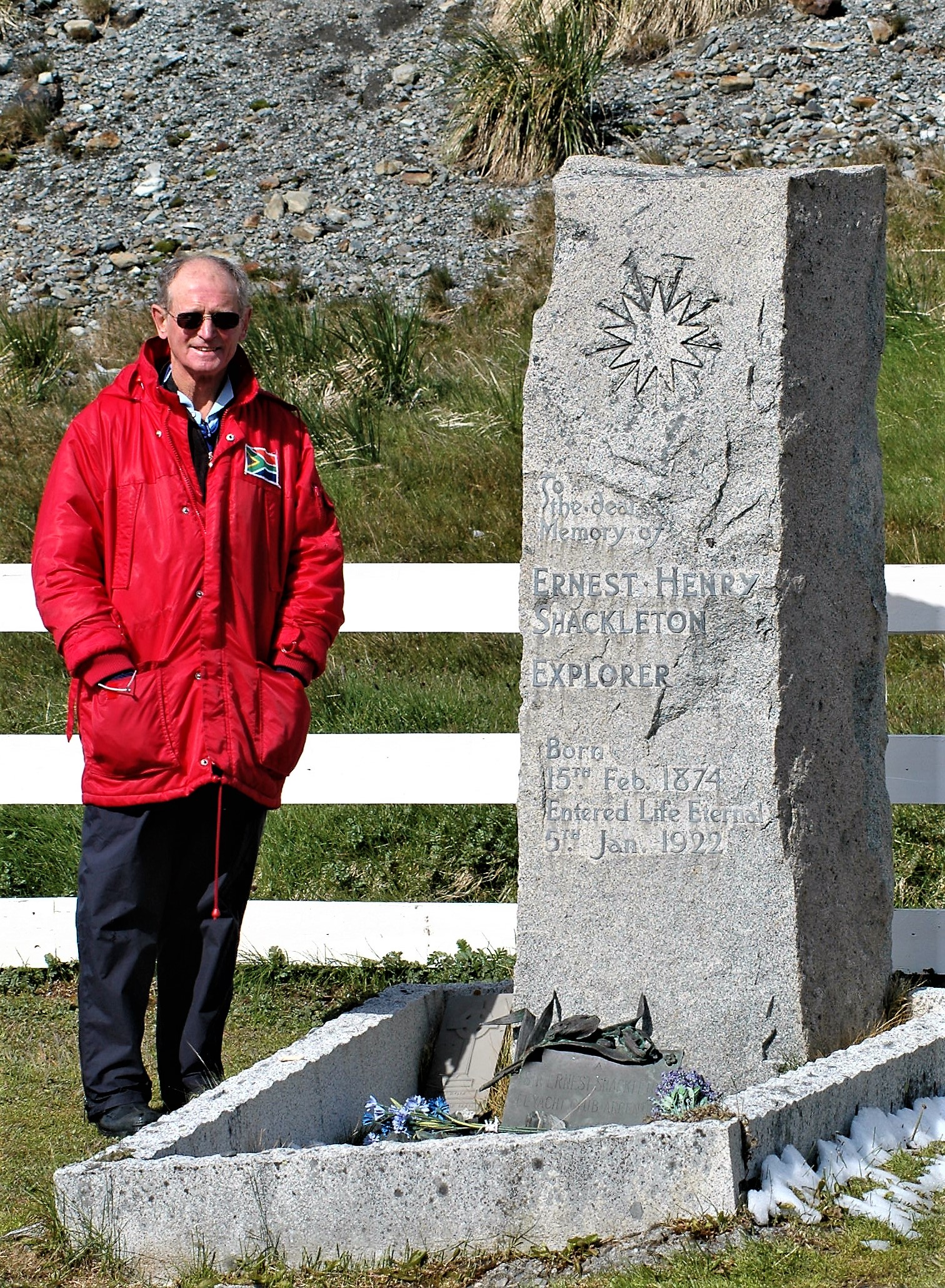
Shackleton’s grave, South Georgia
Although born in Pretoria, I was at school and university in Cape Town. My surgical training started with internship at Groote Schuur Hospital and I was then fortunate to spend time in Zimbabwe, London, Edinburgh, Durban and, by then married to Catherine who I met in the pub after a hockey match in Durban, we returned to Cape Town. In 2007 , as per our partnership agreement, I retired from the practice but continued to assist my partners in theatre – and also celebrated my semi-retirement by undertaking a cruise from Ushuaia in Argentina to the Falklands, South Georgia and the Antarctic Peninsula as far as Petermann Island, just north of the Antarctic Circle. As a result of the Covid-19 pandemic I have now retired fully as it is recommended that surgeons over 60 should stay out of theatre.
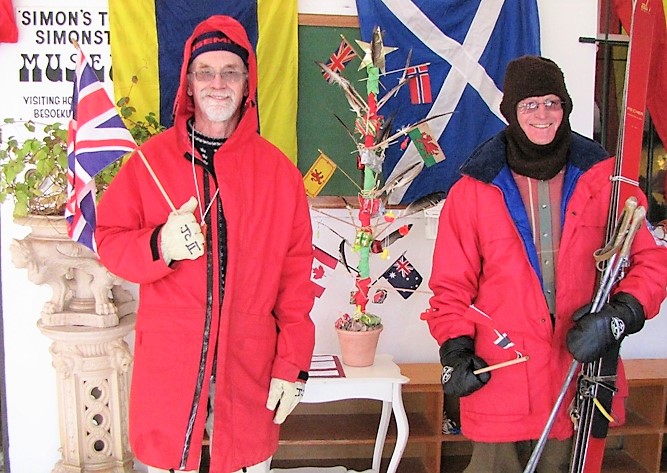
John Cooper and Sydney at the Simon’s Town Historical Museum for a luncheon to commemorate the Centenary of Scott’s Midwinter Dinner – 5th June 2011
We visited the UK in 2008 and with my newfound interest in Antarctic history I contacted the Scott Polar Research Institute in Cambridge about the possibility of looking for further South African connections in their archives. Bob Headland, then the Director, replied with an invitation to visit them and he recommended that I read an article he had written on the very subject – “A history of South African Involvement in Antarctica and at the Prince Edward Islands” which to this day is still the definitive article on the subject. His co-author was John Cooper – and it was only when I returned home that I discovered that he was the same John Cooper that I’d been running with three times a week for several years – and was instrumental in the start of ALSA. I was totally unaware of his interest in, and wide knowledge of, Antarctic history and, needless to say, over the years since then we have continued to run together and John has passed on a wealth of information to me.
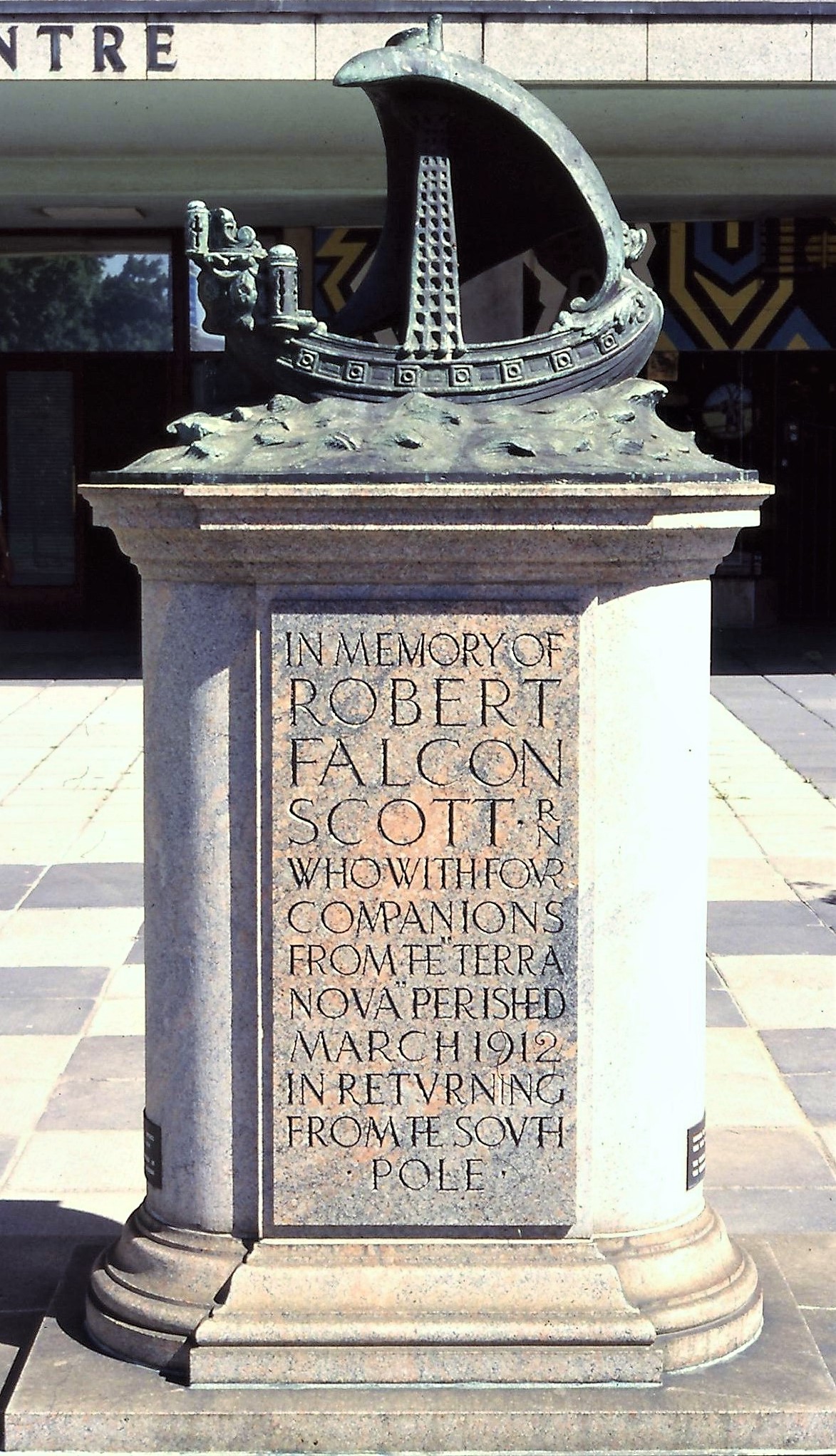 Initially my interest was in trawling through the published accounts of the Heroic Era expeditions for South African connections-and discovered that, not only did many of the expeditions use Cape Town or Simon’s Town as a revictualling port, but many of the members of those expeditions had spent time in South Africa either before or after their visits to Antarctica – Maclear (Challenger), Scott, Shackleton, Wild, Joyce, Ferrar (Discovery), Pirie (Scotia), Davis (Nimrod),Oates, Mears (Terra Nova), Gray (Aurora)and James (Endurance) are some of them. As I delved deeper into the subject, I realised that it was part of our history that was not well known here in South Africa. The only visible evidence of this that I was aware of was the Scott Memorial near to the fountain at the bottom of Adderley Street and a small display on Marion Island at the Iziko Museum.
Initially my interest was in trawling through the published accounts of the Heroic Era expeditions for South African connections-and discovered that, not only did many of the expeditions use Cape Town or Simon’s Town as a revictualling port, but many of the members of those expeditions had spent time in South Africa either before or after their visits to Antarctica – Maclear (Challenger), Scott, Shackleton, Wild, Joyce, Ferrar (Discovery), Pirie (Scotia), Davis (Nimrod),Oates, Mears (Terra Nova), Gray (Aurora)and James (Endurance) are some of them. As I delved deeper into the subject, I realised that it was part of our history that was not well known here in South Africa. The only visible evidence of this that I was aware of was the Scott Memorial near to the fountain at the bottom of Adderley Street and a small display on Marion Island at the Iziko Museum.
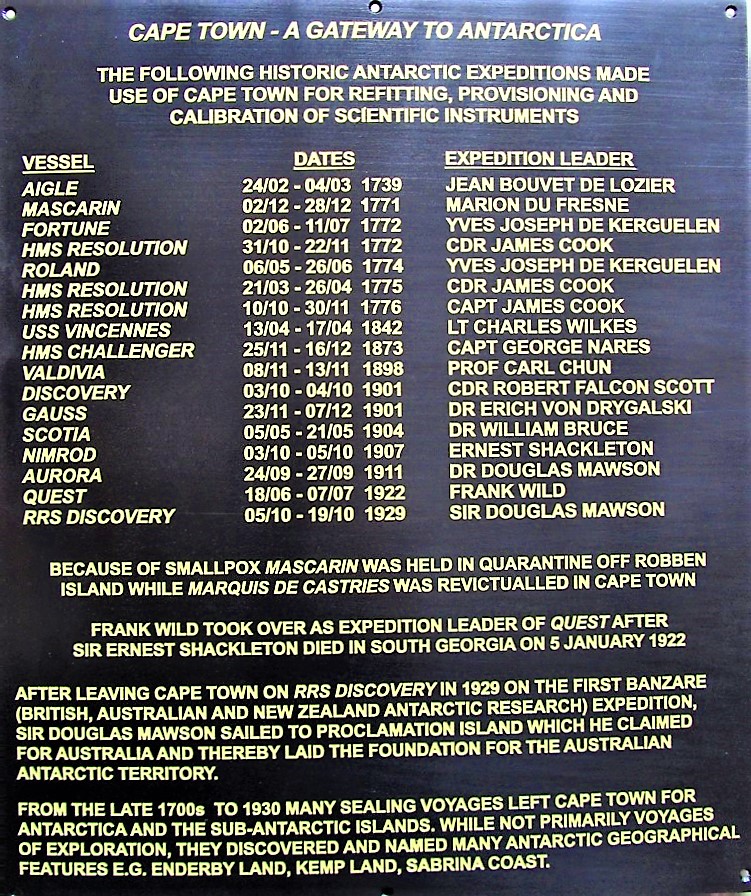

 (Above: Cape Town Plaque, Plaque outside British Hotel and at Jubilee Square, Simon’s Town) I therefore tried to find ways of highlighting the concept that Cape Town and Simon’s Town were “Gateways to Antarctica” – by creating presentations to historical societies, U3A’s, UCT Summer School, and Ship Societies both in Cape Town and Durban. I also facilitated the erection of plaques listing the Antarctic expeditions that passed through Simon’s Town in Jubilee Square and the British Hotel there. Another plaque containing the list of the 17 historic Antarctic expeditions that had made use of Cape Town was made with a view to it being erected somewhere in the V & A Waterfront – but unfortunately it is still gathering dust somewhere there.
(Above: Cape Town Plaque, Plaque outside British Hotel and at Jubilee Square, Simon’s Town) I therefore tried to find ways of highlighting the concept that Cape Town and Simon’s Town were “Gateways to Antarctica” – by creating presentations to historical societies, U3A’s, UCT Summer School, and Ship Societies both in Cape Town and Durban. I also facilitated the erection of plaques listing the Antarctic expeditions that passed through Simon’s Town in Jubilee Square and the British Hotel there. Another plaque containing the list of the 17 historic Antarctic expeditions that had made use of Cape Town was made with a view to it being erected somewhere in the V & A Waterfront – but unfortunately it is still gathering dust somewhere there.
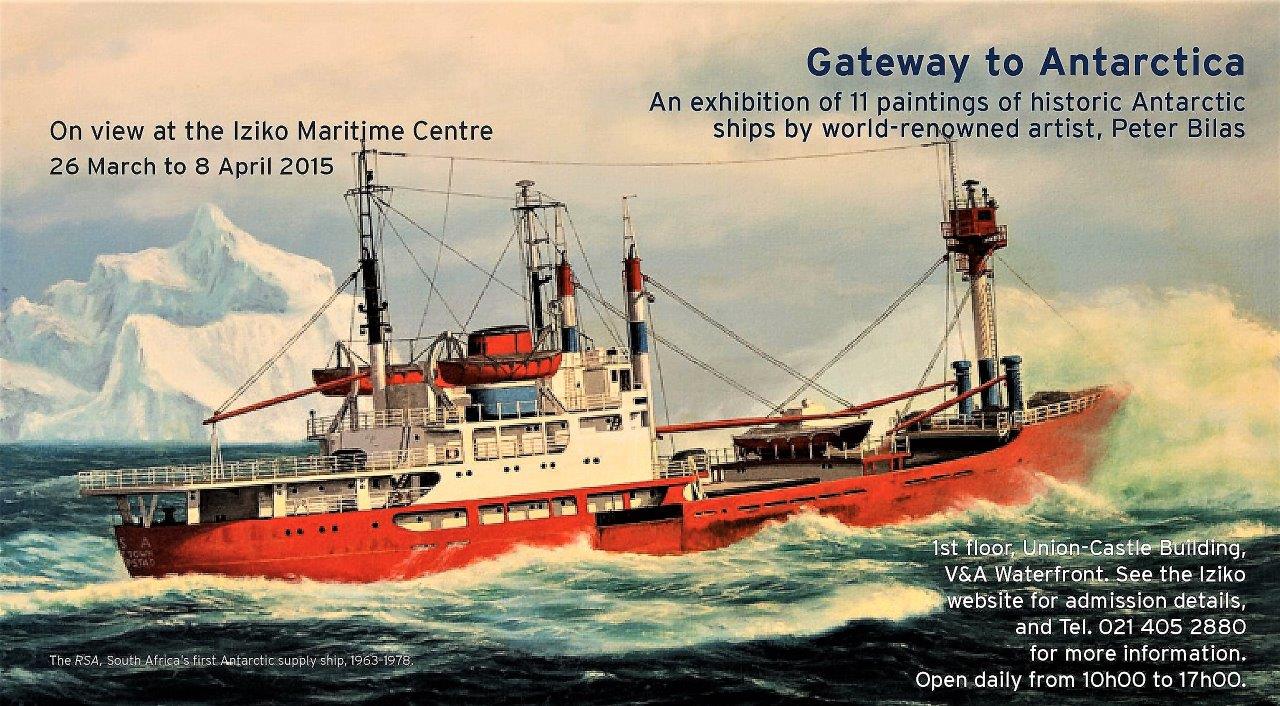 Another source of information has been the study of newspaper reports of their visits – thanks to the South African library. One such report on the departure of Aurora from Cape Town in 1911 mentioned how one of the huskies had fallen overboard and had been rescued by a passing dinghy. This enabled the episode to be recorded in a painting of her departure by Jeremy Day which was commissioned to celebrate the centenary of Aurora’s visit to Cape Town. In 2015 John Cooper had alerted me to the risk that the series of Peter Bilas paintings of Antarctic ships on SA Agulhas I might get lost or damaged when being transferred to the new S.A. Agulhas II. We therefore arranged for them to be restored (sponsored by GAC Shipping) and exhibited in the Iziko Maritime Museum at the V&A waterfront.
Another source of information has been the study of newspaper reports of their visits – thanks to the South African library. One such report on the departure of Aurora from Cape Town in 1911 mentioned how one of the huskies had fallen overboard and had been rescued by a passing dinghy. This enabled the episode to be recorded in a painting of her departure by Jeremy Day which was commissioned to celebrate the centenary of Aurora’s visit to Cape Town. In 2015 John Cooper had alerted me to the risk that the series of Peter Bilas paintings of Antarctic ships on SA Agulhas I might get lost or damaged when being transferred to the new S.A. Agulhas II. We therefore arranged for them to be restored (sponsored by GAC Shipping) and exhibited in the Iziko Maritime Museum at the V&A waterfront.
The Commonwealth Trans-Antarctic Expedition of 1955-8 was the first to cross the continent from the Weddell Sea to the Ross Sea – which Shackleton had failed to do in his Endurance expedition of 1914-17. The meteorologist on that expedition was Hannes la Grange, who thereby became the first South African to reach the South Pole and in 1959 he was appointed leader of the first South African expedition to Antarctica (SANAE 1). The surplus after the expedition established a fund and each year, as a result of Hannes’s participation, South Africans are able each year to apply for a grant for Antarctic research. In 2010 I applied for, and received, a grant which enabled an Antarctic display to be established at the Simon’s Town Historical Museum. Last year a poster entitled “Simon’s Town-a Gateway to Antarctica” was added to the Wall of Memory in the centre of the town(Top image with Sydney Cullis).
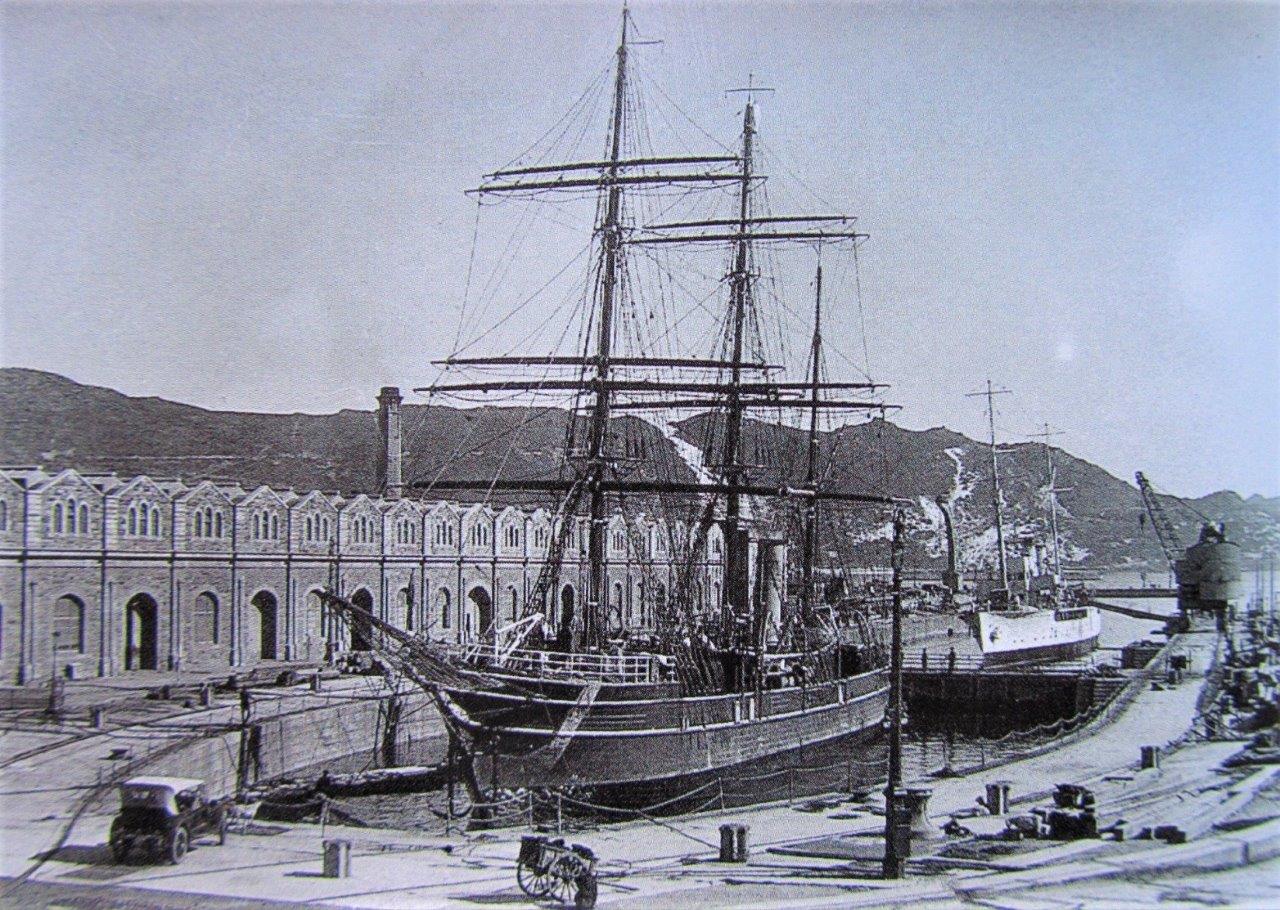
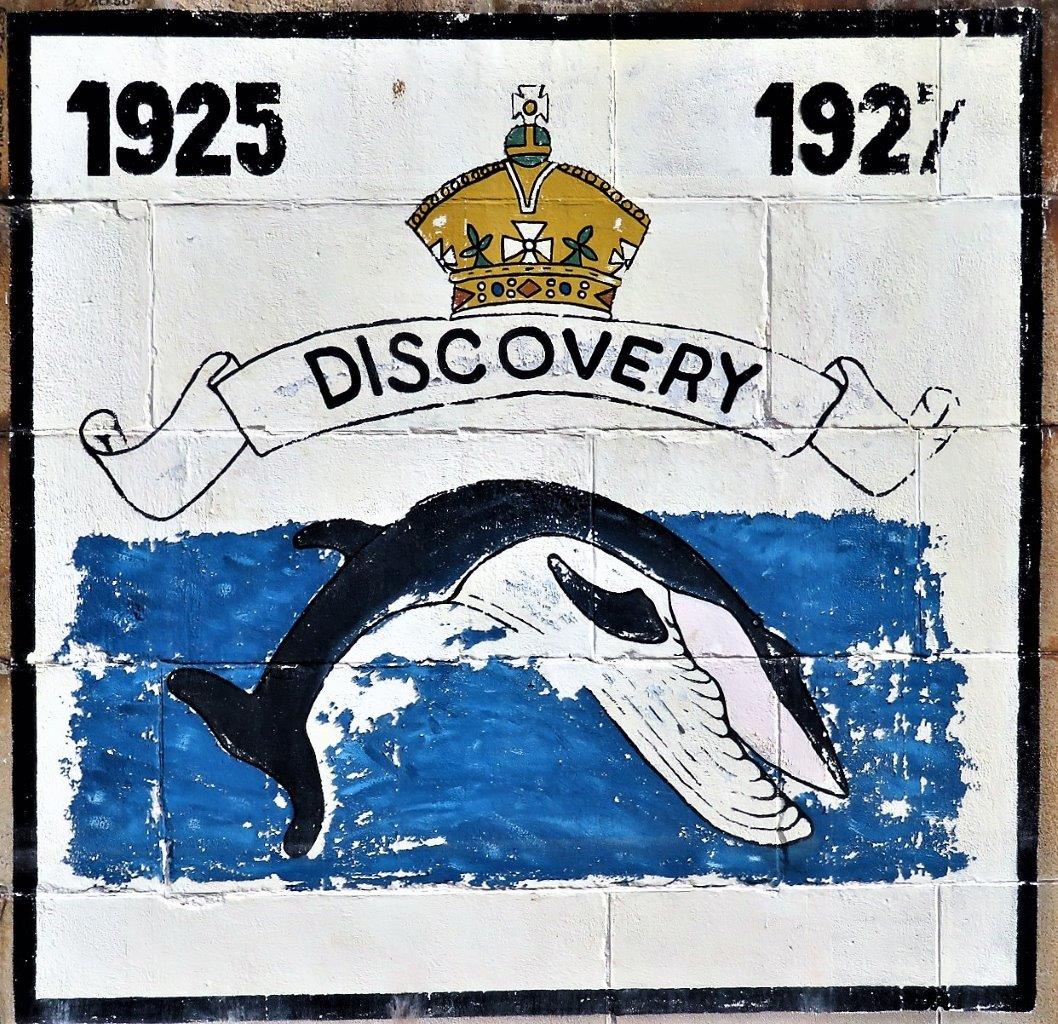 I have enjoyed the opportunity whenever Antarctic historians have visited Cape Town to show them our “Antarctic sites” – most memorably when showing Bob Headland around Simon’s town we discovered that Discovery’s badge had been added to those on the wall of the Selbourne drydock. Discovery had undergone an extensive refit in 1926 in the dock prior to her departure on a research voyage to South Georgia which paved the way to the international ban on whaling enacted in 1936
I have enjoyed the opportunity whenever Antarctic historians have visited Cape Town to show them our “Antarctic sites” – most memorably when showing Bob Headland around Simon’s town we discovered that Discovery’s badge had been added to those on the wall of the Selbourne drydock. Discovery had undergone an extensive refit in 1926 in the dock prior to her departure on a research voyage to South Georgia which paved the way to the international ban on whaling enacted in 1936

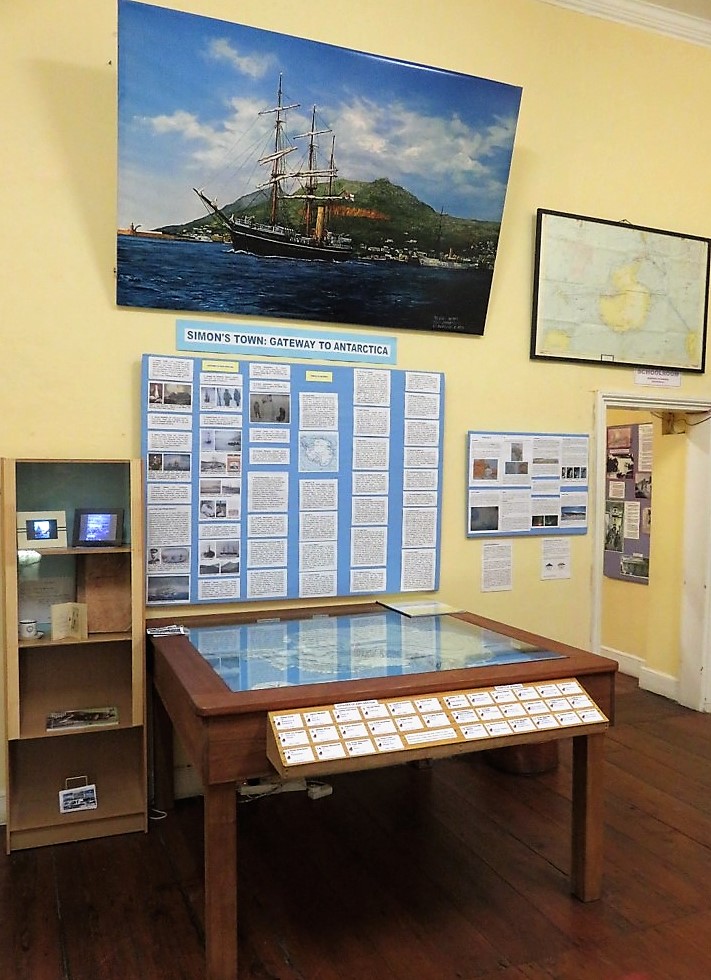
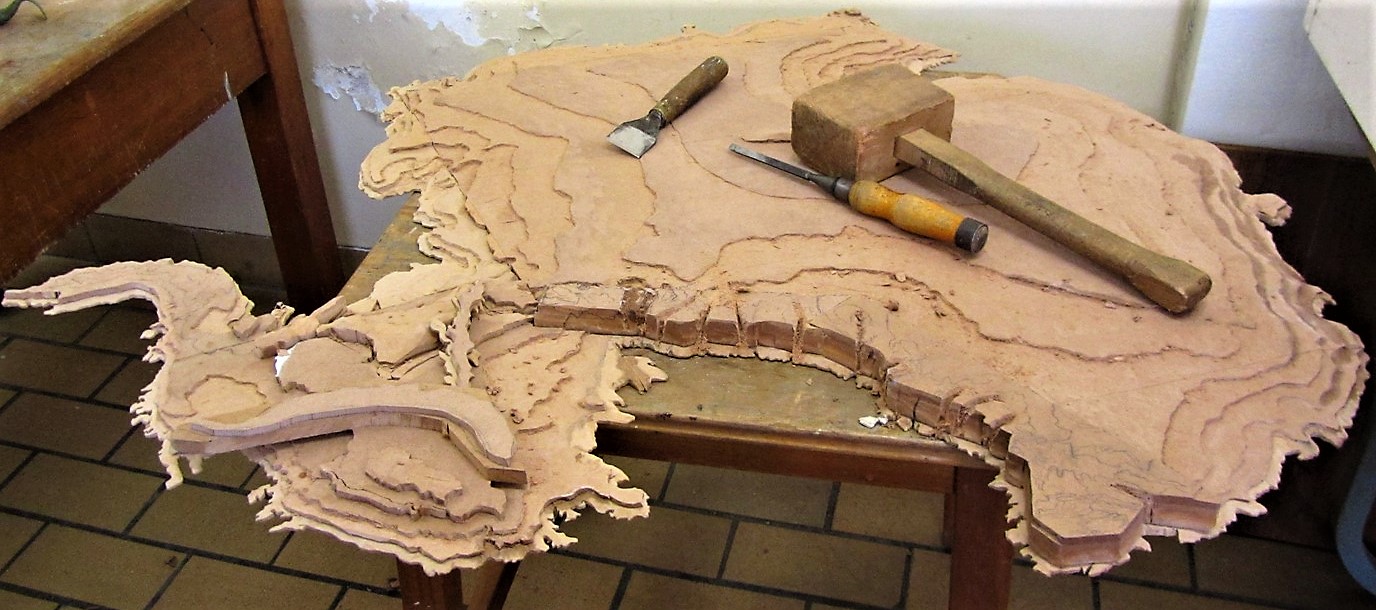 (above: Display at Simon’s Town Museum) The significant anniversaries of the historic Antarctic expeditions have been useful to raise awareness of them in South Africa. In December 2021 it will be 250 years since Marion Dufresne spent a month in Cape Town prior to his re-discovering the island which now bears his name and, as a result of its annexation 1947-8, it is an integral part of South Africa. We hope it will be suitably commemorated. Having a niche interest such as this has provided the opportunity when travelling away from Cape Town to search out items of Antarctic interest – (article on ALSA repository) I have been very fortunate to have been afforded the opportunity to develop a new interest/hobby which has resulted in my meeting so many very helpful individuals. I hope that it may have generated a more widespread interest in this relatively unknown facet of South African history.” This is definitely a field where research in the humanities and history of South Africa in the Antarctic can be done.
(above: Display at Simon’s Town Museum) The significant anniversaries of the historic Antarctic expeditions have been useful to raise awareness of them in South Africa. In December 2021 it will be 250 years since Marion Dufresne spent a month in Cape Town prior to his re-discovering the island which now bears his name and, as a result of its annexation 1947-8, it is an integral part of South Africa. We hope it will be suitably commemorated. Having a niche interest such as this has provided the opportunity when travelling away from Cape Town to search out items of Antarctic interest – (article on ALSA repository) I have been very fortunate to have been afforded the opportunity to develop a new interest/hobby which has resulted in my meeting so many very helpful individuals. I hope that it may have generated a more widespread interest in this relatively unknown facet of South African history.” This is definitely a field where research in the humanities and history of South Africa in the Antarctic can be done.
Text and Images supplied by Sydney Cullis.
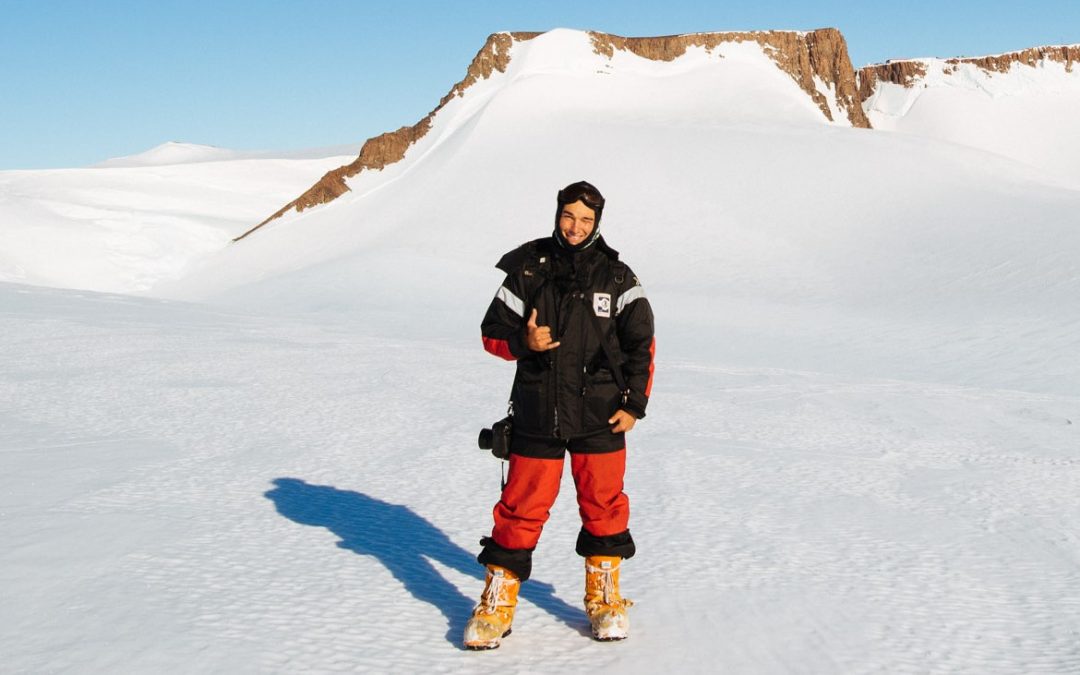
by Ria Olivier | Mar 20, 2020 | Antarctica, Discover, Environment, SANAE, SANAP, SEAmester, Take-Over Operations
Our mid-Month Series also include those people that has become part of the SANAP community and do a lot of 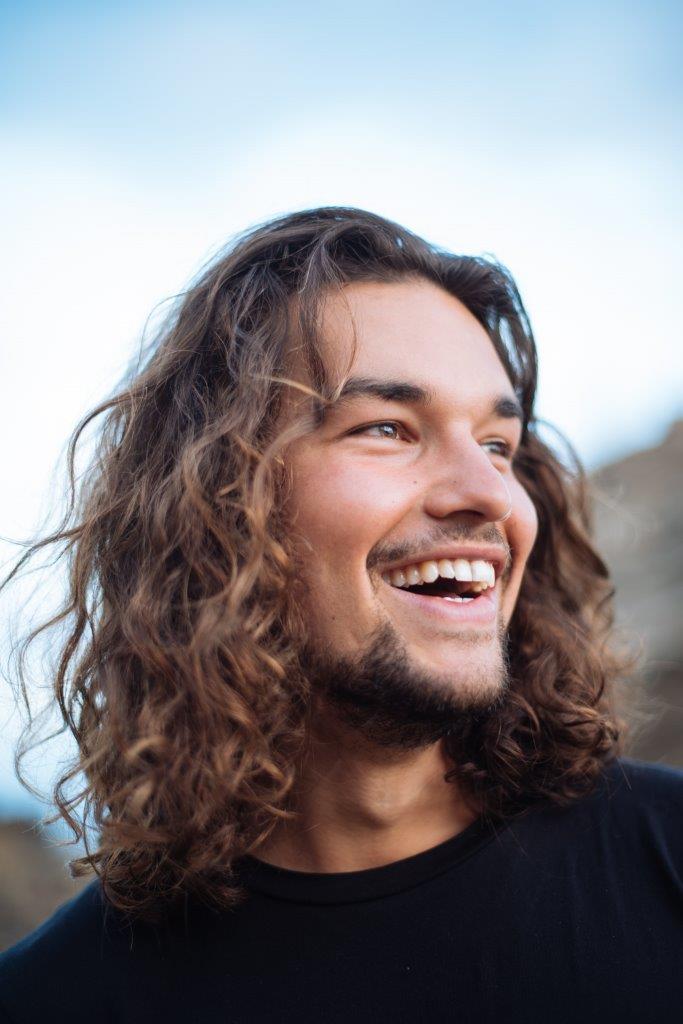 freelance and volunteer work for SANAP. Alexander Oelofse is becoming a well-known name within the SANAP community. His videos of SEAmester give a real insight to the SEAmester program. ALSA
freelance and volunteer work for SANAP. Alexander Oelofse is becoming a well-known name within the SANAP community. His videos of SEAmester give a real insight to the SEAmester program. ALSA  realized that as freelancer he can be of great service to the community and to ALSA. During the Departure of SANAE59 an agreement was reached to compile videos during takeover. Ria Olivier met with him after his expedition at Iziko during the Sentinels of the South exhibition launch and possibilities were discussed of his contributions toward the Antarctic legacy of our country.
realized that as freelancer he can be of great service to the community and to ALSA. During the Departure of SANAE59 an agreement was reached to compile videos during takeover. Ria Olivier met with him after his expedition at Iziko during the Sentinels of the South exhibition launch and possibilities were discussed of his contributions toward the Antarctic legacy of our country.
ALSA asked him when he got interested in photography?
What started off as a childhood dream turned into a reality on the 2019/2020 Antarctic relief voyage. I have always had a deep love for the ocean and knew from a young age 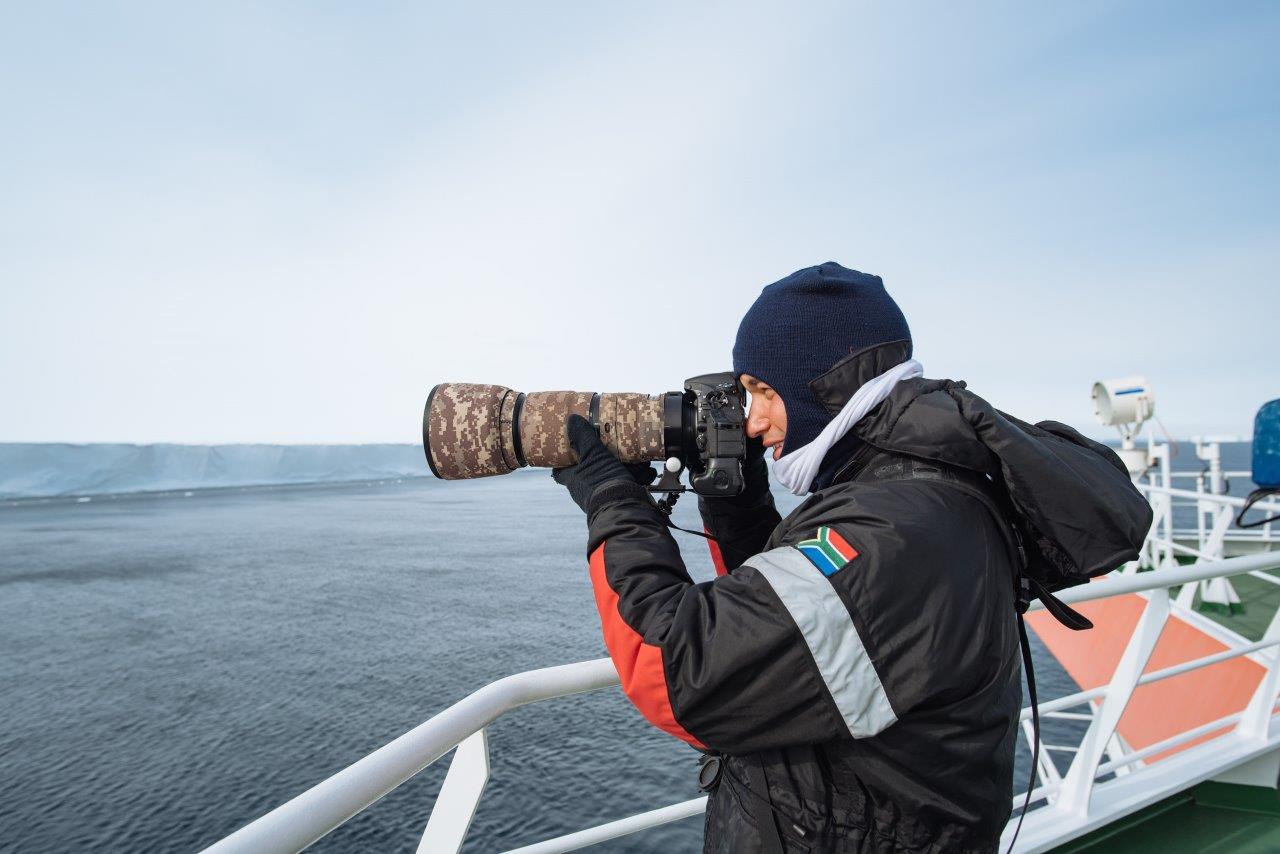 that I would want to be in, or surrounded, by the ocean as much as possible. I wanted to study marine biology for a long time. Until job shadowing a marine biologist and realising much of the work would be lab-based. I couldn’t imagine that for myself. I then decided to pursue my other passion; photography. Being a member of the photographic society in high school sparked my interest. This led to me studying fine art photography at Michaelis in Cape Town. At Michaelis, I continued to create art centering around the environment.
that I would want to be in, or surrounded, by the ocean as much as possible. I wanted to study marine biology for a long time. Until job shadowing a marine biologist and realising much of the work would be lab-based. I couldn’t imagine that for myself. I then decided to pursue my other passion; photography. Being a member of the photographic society in high school sparked my interest. This led to me studying fine art photography at Michaelis in Cape Town. At Michaelis, I continued to create art centering around the environment.
How did he become involved in SANAP?
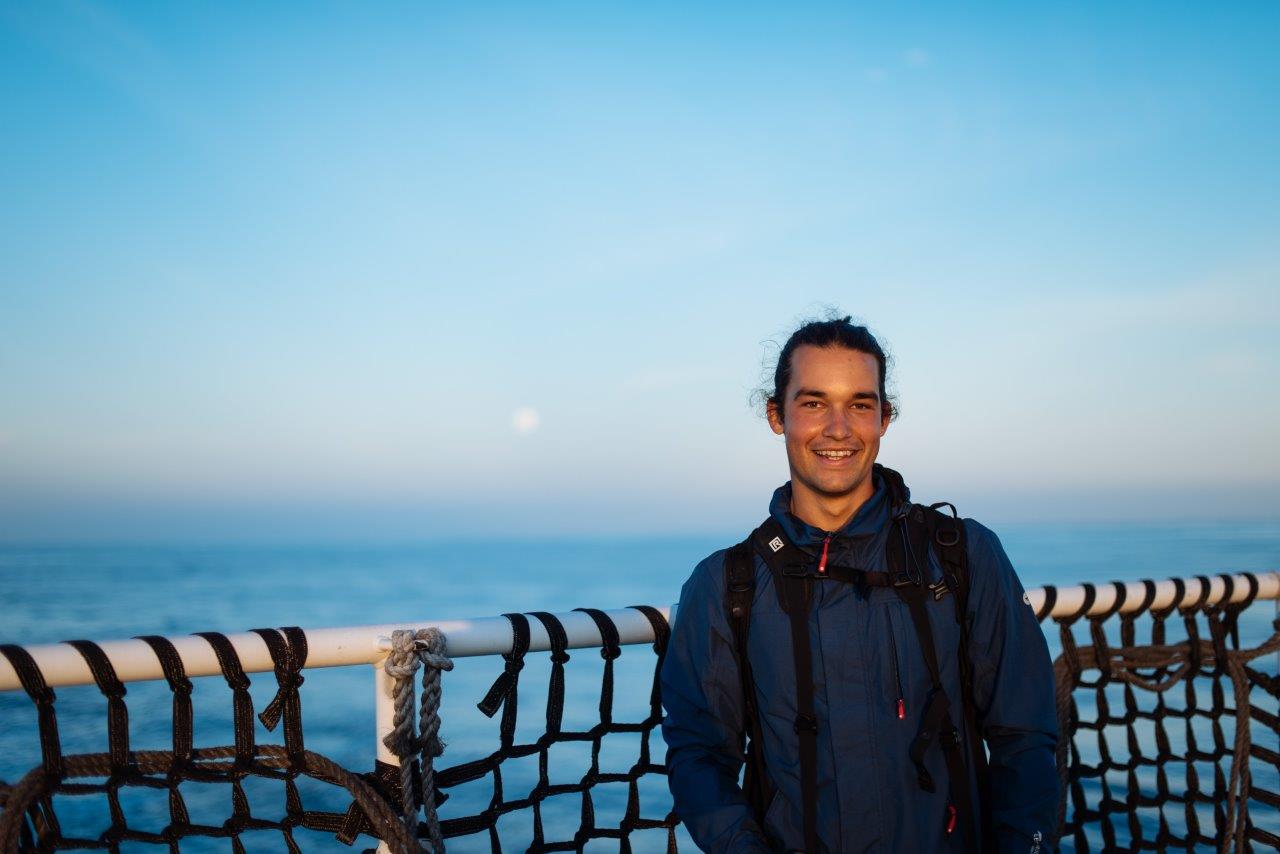 While at University I already started trying to find a way onboard the S.A. Agulhas II. I had to see this stark, extreme and yet breathtakingly beautiful landscape for myself. It took a few years of applying, without succeeding, until I could get onboard the SEAmester III as a lecturer after my studies. Onboard students from various universities around South Africa get the opportunity to experience oceanographic research at its best, out in the field, onboard the S.A. Agulhas II. To have the privilege to experience SEAmester as a student must be absolutely amazing, but more importantly, the eye-opening experience that can lead some students to follow their passions in the marine studies field.
While at University I already started trying to find a way onboard the S.A. Agulhas II. I had to see this stark, extreme and yet breathtakingly beautiful landscape for myself. It took a few years of applying, without succeeding, until I could get onboard the SEAmester III as a lecturer after my studies. Onboard students from various universities around South Africa get the opportunity to experience oceanographic research at its best, out in the field, onboard the S.A. Agulhas II. To have the privilege to experience SEAmester as a student must be absolutely amazing, but more importantly, the eye-opening experience that can lead some students to follow their passions in the marine studies field.
Opportunity to go to Antarctica:
After doing two SEAmester Expeditions the opportunity came up to go down to Antarctica with UCT. He grabbed the opportunity with both hands. 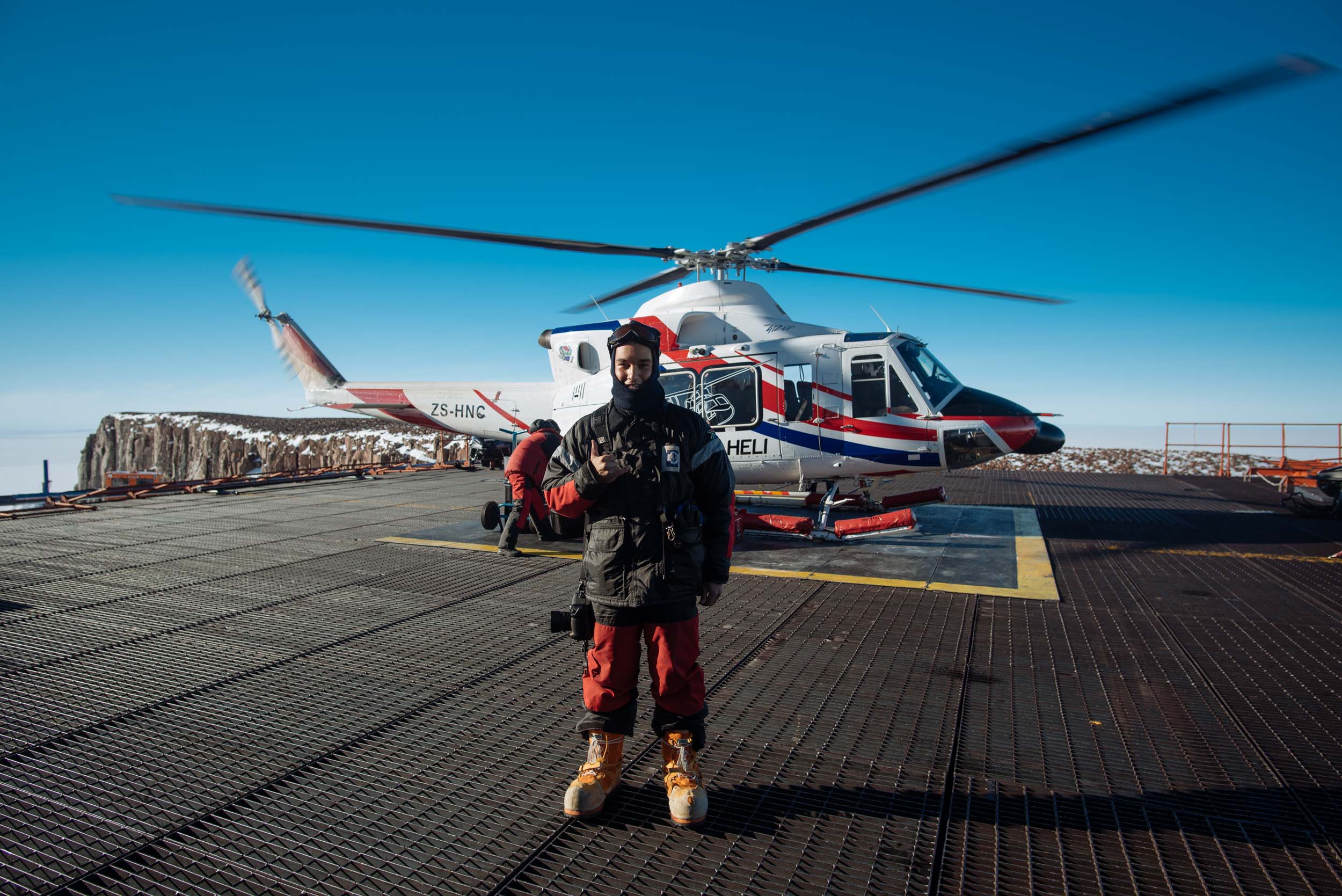 He departed on the first leg of the relief voyage of 2019/2020. I can’t really say I had any expectations, to be frankly honest. AS he has never seen a place like the Antarctica and not having any expectations, it lead to some of his best experiences. He admits that sailing down for 9 days to reach the ice shelf definitely adds to the anticipation and the surprise that is Antarctica. Visit his website to see his collection of Antarctic Images
He departed on the first leg of the relief voyage of 2019/2020. I can’t really say I had any expectations, to be frankly honest. AS he has never seen a place like the Antarctica and not having any expectations, it lead to some of his best experiences. He admits that sailing down for 9 days to reach the ice shelf definitely adds to the anticipation and the surprise that is Antarctica. Visit his website to see his collection of Antarctic Images
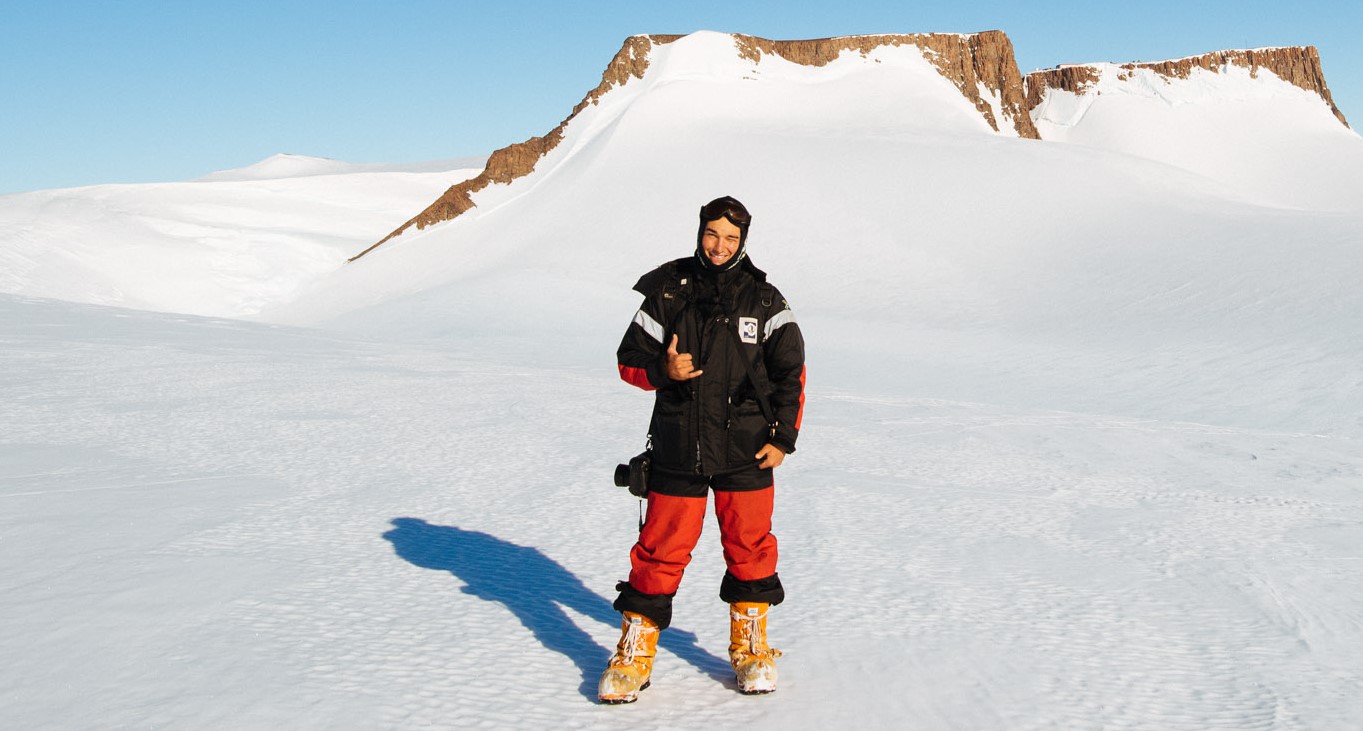 “Seeing the ice shelf for the first time left me speechless. I became quite emotional, realising my dream had come true”.
“Seeing the ice shelf for the first time left me speechless. I became quite emotional, realising my dream had come true”.
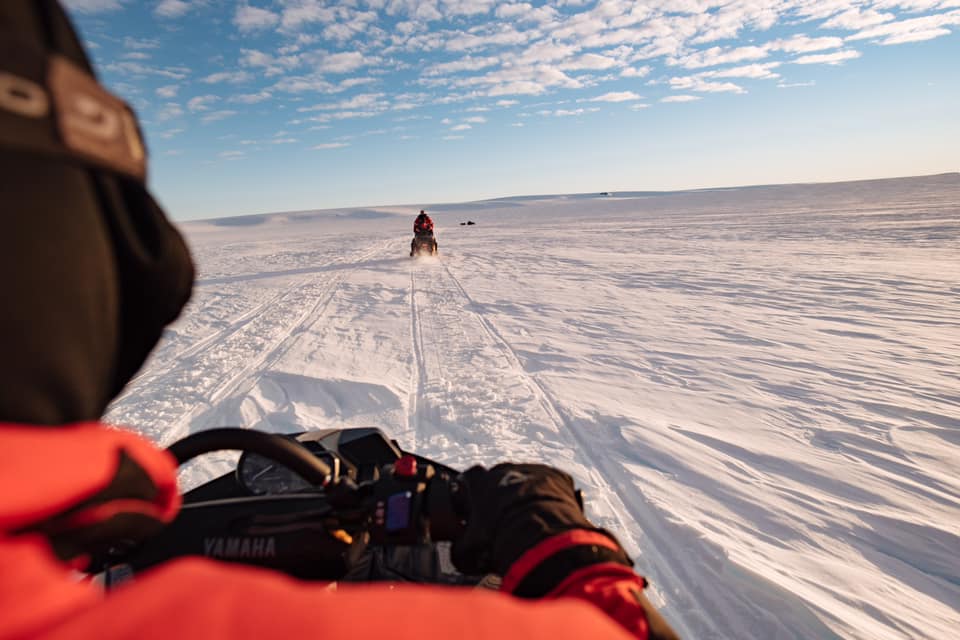 “One of my highlights was getting to sit on the back of a snowmobile and traverse the snowy landscapes. Being the passenger allowed me to, despite the icy breeze, absorb the sublime landscapes that we passed through. This image was captured at 02:00 am. You could see the sun dip ever so slightly but never setting. I could get used to that. It made life seem endless, like there was no rush”
“One of my highlights was getting to sit on the back of a snowmobile and traverse the snowy landscapes. Being the passenger allowed me to, despite the icy breeze, absorb the sublime landscapes that we passed through. This image was captured at 02:00 am. You could see the sun dip ever so slightly but never setting. I could get used to that. It made life seem endless, like there was no rush”
Alex Oelofse is looking forward to working alongside ALSA to inspire youth and spread the information about the amazing program that South Africa runs all the way down in Antarctica.
His contributions will soon be available on the ALSA archive and see in next Mid-Month series one of his videos.
All Images copyright Alexander Oelofse
Visit his website https://www.alexanderoelofse.com/ and Instagram

by Ria Olivier | Mar 18, 2020 | Discover, Jobs, Legacy, Marion Island, Research, SANAP, SCAR, Science
I completed all my science degrees at the University of Pretoria after some time at Wits studying law. I was fortunate to be appointed at Stellenbosch University in 2000, spent 2001 in France, and returned to Stellenbosch University in 2002 where I worked first as a Senior Technical Officer, then as a Researcher and finally an Associate Professor before relocating to the University of Johannesburg in 2011,  and became a Full Professor in 2012. Our research group at UJ transitioned into a Research Centre, and we currently house a number of postdoctoral fellows and postgraduate students. We have collaborations with a number of groups both within South Africa, and internationally.
and became a Full Professor in 2012. Our research group at UJ transitioned into a Research Centre, and we currently house a number of postdoctoral fellows and postgraduate students. We have collaborations with a number of groups both within South Africa, and internationally.
I have been involved in research on the Prince Edward 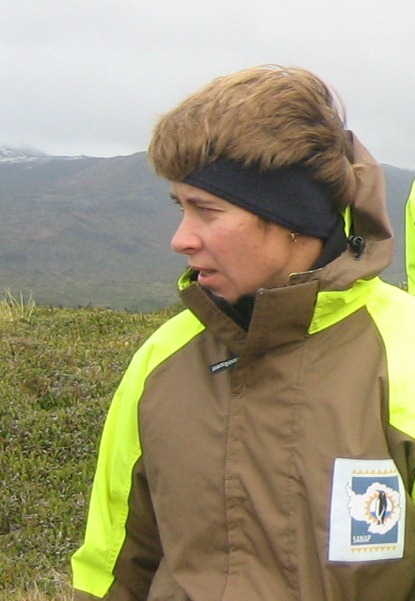 Islands since 2004 and have been fortunate to work with some of the legends as well as bright upcoming researchers (then students, now fully established and leading their own research groups). For my sins, I was appointed as Chief shore-based Scientist in 2006 (the first time that a woman held this position), and managed to get all people to relevant huts on time, even though we almost had to put together a rescue party to retrieve Valdon Smith and Sarette Slabber from Mixed Pickle (typical Marion Island bad weather meant that they could not walk over Azorella Kop). Thankfully the weather cleared, and all shore-based people made it back to the SA Agulhas I.
Islands since 2004 and have been fortunate to work with some of the legends as well as bright upcoming researchers (then students, now fully established and leading their own research groups). For my sins, I was appointed as Chief shore-based Scientist in 2006 (the first time that a woman held this position), and managed to get all people to relevant huts on time, even though we almost had to put together a rescue party to retrieve Valdon Smith and Sarette Slabber from Mixed Pickle (typical Marion Island bad weather meant that they could not walk over Azorella Kop). Thankfully the weather cleared, and all shore-based people made it back to the SA Agulhas I.
Bettine van Vuuren is currently the Chair of the South African National Committee for SCAR, and a Principal Investigator in the South African National Antarctic Programme (SANAP) – see Biocomplexity: Understanding biological patterns in space and time.
Why you love your career in science?
I have always thought that animals are interesting and wondered why they act in certain ways. Why do some dogs get on well, while others fight? How do bees know where to find 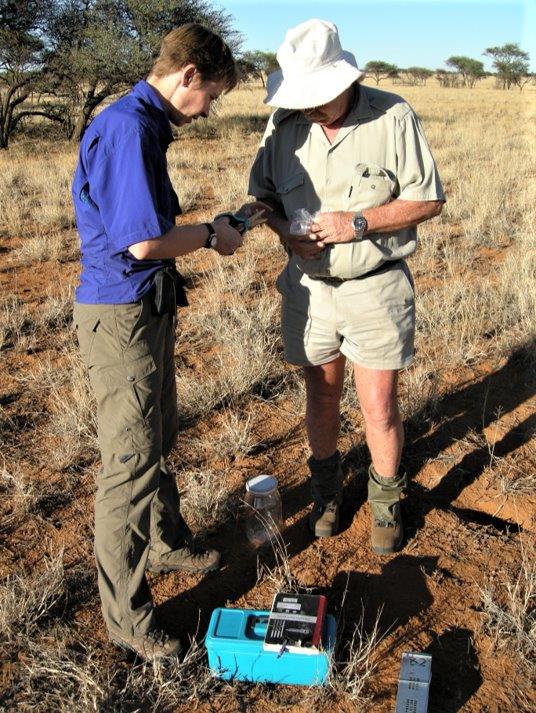 flowers and pollen, and how do they get back to their hives? Are they really all female? Why are some species so successful while others are continuously threatened and faced with extinction; especially considering that our world is changing much faster than ever before?
flowers and pollen, and how do they get back to their hives? Are they really all female? Why are some species so successful while others are continuously threatened and faced with extinction; especially considering that our world is changing much faster than ever before? 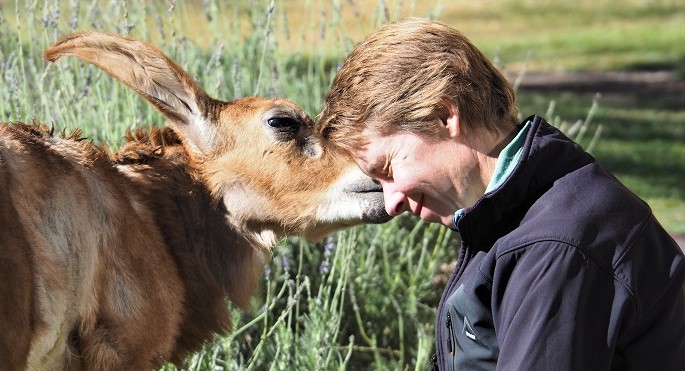
Once I understood that the answers to most of these questions have a strong genetic basis, I was hooked. My work allows me to search for the answers to many of these questions, and I work in some of the most extraordinary and beautiful places on earth (from our hot and dry desert and semi-desert regions to extremely wet and cold sub-Antarctic islands). I am privileged to work and interact with extremely talented people (both within and outside South Africa; old and young); there is not a day that I am not thankful for the way my life turned out. What is perhaps the strongest motivating factor is that I can make a difference in the lives of younger people (through education, working at the University of Johannesburg), and this is priceless.
Why you believe more women should pursue a career in science?
The first thing to say is that I believe there is nothing that any person can’t do if they apply their mind (and time) to it. We often set our own ceilings based on the general beliefs that society 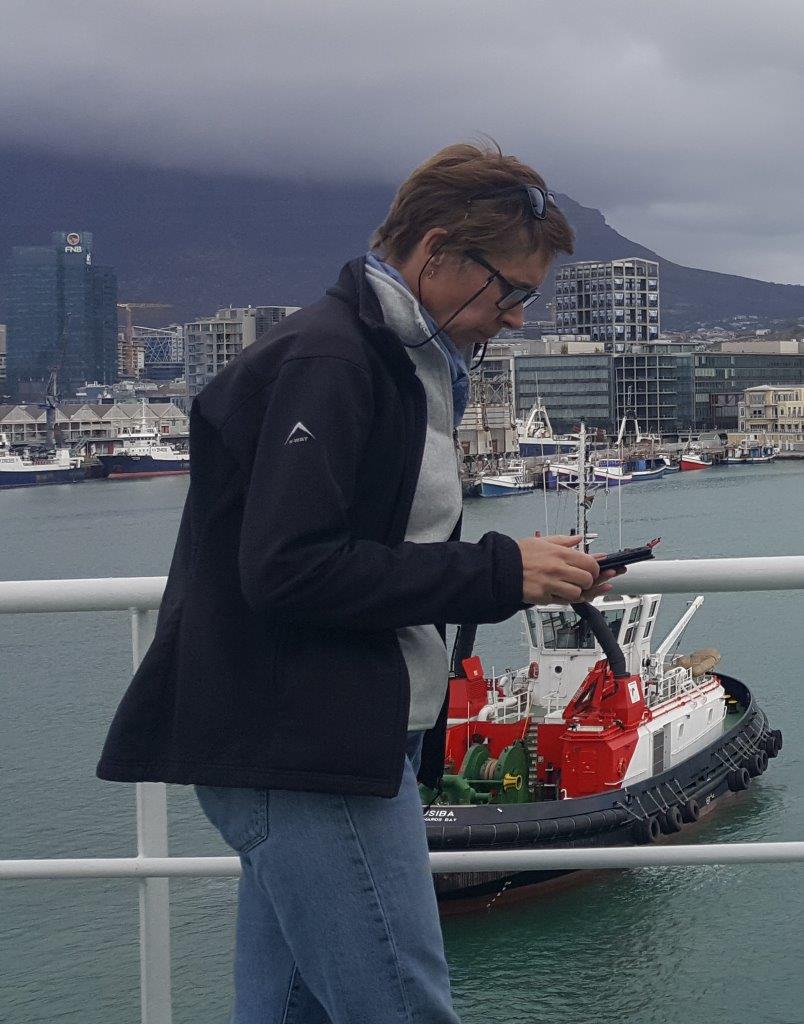 or others impose on us; and it is crucial that we break through these (non-real) boundaries. STEM fields are a case in hand. This is especially true for woman, who traditionally were considered homemakers or child-carers. In STEM specifically, fields such as mathematics, physics and engineering, and traditionally more field-based disciplines such as zoology, botany, or oceanography, are seen as more suited to men (either because women were not traditionally considered as analytically strong, capable to work in the field, or for that matter, be away from home for any period of time). It is critical that any person (both men and women) should carefully consider what they enjoy, what their specific strengths are (be that a STEM career for a woman, or as a child carer / homemaker for a man), and then pursue that with all their strength and passion. Personally, I was initially directed into a field that I had no interest in (because I could not answer questions asked regarding where I would work if my husband lived in a small town), and from a personal perspective I strongly urge and support woman that want to step out of the “beaten track”, i.e., what is typically expected from you by society, and follow what they are passionate about.
or others impose on us; and it is crucial that we break through these (non-real) boundaries. STEM fields are a case in hand. This is especially true for woman, who traditionally were considered homemakers or child-carers. In STEM specifically, fields such as mathematics, physics and engineering, and traditionally more field-based disciplines such as zoology, botany, or oceanography, are seen as more suited to men (either because women were not traditionally considered as analytically strong, capable to work in the field, or for that matter, be away from home for any period of time). It is critical that any person (both men and women) should carefully consider what they enjoy, what their specific strengths are (be that a STEM career for a woman, or as a child carer / homemaker for a man), and then pursue that with all their strength and passion. Personally, I was initially directed into a field that I had no interest in (because I could not answer questions asked regarding where I would work if my husband lived in a small town), and from a personal perspective I strongly urge and support woman that want to step out of the “beaten track”, i.e., what is typically expected from you by society, and follow what they are passionate about.
Latest research or study you’re working on?
 I am currently involved in a number of larger projects which aim to understand how species (individuals / populations) respond to change. One such project is on sub-Antarctic Marion Island (funded through the South African National Antarctic Programme), where we are assembling the full genomes of a number of macroinvertebrate species, with the ultimate aim to understand genes under selection, and how biotic and abiotic factors shape the genetic diversity on oceanic islands. In South Africa, and in collaboration with national (SANBI) and international partners (an NSF/NRF funded project), we are investigating how reptile species adapt to changing and transformed landscapes, and what the downstream impacts are on their genes, morphology and behaviour. Across the African continent, and in collaboration with the Research Centre in Biodiversity and Genetic Resources (Portugal), we are documenting the spatial genetic patterns in a number of economically important larger antelope species (such as roan- and sable antelope); our work here directly informs South African policies on translocations.
I am currently involved in a number of larger projects which aim to understand how species (individuals / populations) respond to change. One such project is on sub-Antarctic Marion Island (funded through the South African National Antarctic Programme), where we are assembling the full genomes of a number of macroinvertebrate species, with the ultimate aim to understand genes under selection, and how biotic and abiotic factors shape the genetic diversity on oceanic islands. In South Africa, and in collaboration with national (SANBI) and international partners (an NSF/NRF funded project), we are investigating how reptile species adapt to changing and transformed landscapes, and what the downstream impacts are on their genes, morphology and behaviour. Across the African continent, and in collaboration with the Research Centre in Biodiversity and Genetic Resources (Portugal), we are documenting the spatial genetic patterns in a number of economically important larger antelope species (such as roan- and sable antelope); our work here directly informs South African policies on translocations.
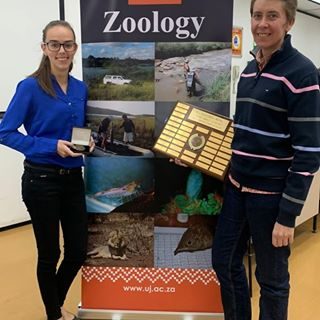
Student: Daniela Monsanto
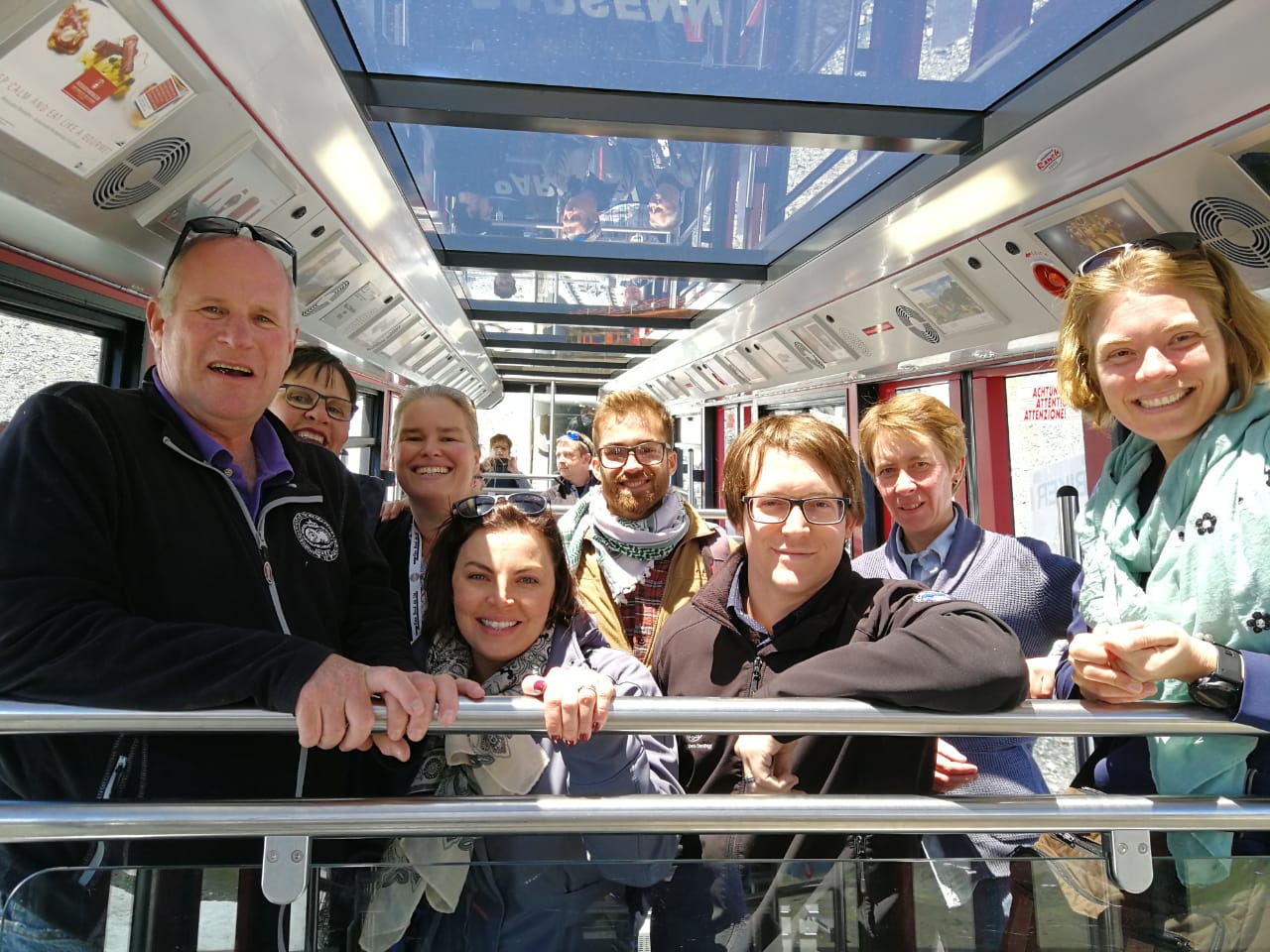
Colleagues & Students at a conference
Students often ask me about their future careers, what they can do with a BSc degree (or broader, a Science degree), or where they will find employment. And my answer is always the same: You can be whatever you want to be. The ultimate aim of science education should be to train students to critically assess situations, to learn how to solve complex problems, and to find solutions to questions. If you have mastered this skill, you can become the President of South Africa, an artisan, an entrepreneur, or a brilliant scientist.
Presentation on Youtube: UJ zoologist on the management and eradication of invasive species
Profile on Wikipedia and on Researchgate
Follow Bettine on Twitter @bettinevv
Visit  website www.molzoolab.co.za
website www.molzoolab.co.za

 Sydney Cullis’s hobby turned out to be a bonus for the preservation of the Legacy of South Africa in the Antarctic region. ” It all started in 1993 when our son, James, was in Matric he had to produce a talk for one of the school societies and, as the Fiennes/Stroud “In the footsteps of Scott” expedition to cross Antarctica unsupported was in the news, he decided to choose it as his subject. To provide him with some guidance I started reading about the history of Antarctic exploration – and the more I read, the more fascinating I found it – and the more South African connections I came across. I was probably more receptive than I might otherwise have been as the first film I ever went to see (aged 6) was “Scott of the Antarctic” in 1948 and I have never forgotten the haunting soundtrack music of the Vaughan Williams’s 7th Symphony as they struggled up the Beardmore Glacier.
Sydney Cullis’s hobby turned out to be a bonus for the preservation of the Legacy of South Africa in the Antarctic region. ” It all started in 1993 when our son, James, was in Matric he had to produce a talk for one of the school societies and, as the Fiennes/Stroud “In the footsteps of Scott” expedition to cross Antarctica unsupported was in the news, he decided to choose it as his subject. To provide him with some guidance I started reading about the history of Antarctic exploration – and the more I read, the more fascinating I found it – and the more South African connections I came across. I was probably more receptive than I might otherwise have been as the first film I ever went to see (aged 6) was “Scott of the Antarctic” in 1948 and I have never forgotten the haunting soundtrack music of the Vaughan Williams’s 7th Symphony as they struggled up the Beardmore Glacier.


 Initially my interest was in trawling through the published accounts of the Heroic Era expeditions for South African connections-and discovered that, not only did many of the expeditions use Cape Town or Simon’s Town as a revictualling port, but many of the members of those expeditions had spent time in South Africa either before or after their visits to Antarctica – Maclear (Challenger), Scott, Shackleton, Wild, Joyce, Ferrar (Discovery), Pirie (Scotia), Davis (Nimrod),Oates, Mears (Terra Nova), Gray (Aurora)and James (Endurance) are some of them. As I delved deeper into the subject, I realised that it was part of our history that was not well known here in South Africa. The only visible evidence of this that I was aware of was the Scott Memorial near to the fountain at the bottom of Adderley Street and a small display on Marion Island at the Iziko Museum.
Initially my interest was in trawling through the published accounts of the Heroic Era expeditions for South African connections-and discovered that, not only did many of the expeditions use Cape Town or Simon’s Town as a revictualling port, but many of the members of those expeditions had spent time in South Africa either before or after their visits to Antarctica – Maclear (Challenger), Scott, Shackleton, Wild, Joyce, Ferrar (Discovery), Pirie (Scotia), Davis (Nimrod),Oates, Mears (Terra Nova), Gray (Aurora)and James (Endurance) are some of them. As I delved deeper into the subject, I realised that it was part of our history that was not well known here in South Africa. The only visible evidence of this that I was aware of was the Scott Memorial near to the fountain at the bottom of Adderley Street and a small display on Marion Island at the Iziko Museum.

 (Above: Cape Town Plaque, Plaque outside British Hotel and at Jubilee Square, Simon’s Town) I therefore tried to find ways of highlighting the concept that Cape Town and Simon’s Town were “Gateways to Antarctica” – by creating presentations to historical societies, U3A’s, UCT Summer School, and Ship Societies both in Cape Town and Durban. I also facilitated the erection of plaques listing the Antarctic expeditions that passed through Simon’s Town in Jubilee Square and the British Hotel there. Another plaque containing the list of the 17 historic Antarctic expeditions that had made use of Cape Town was made with a view to it being erected somewhere in the V & A Waterfront – but unfortunately it is still gathering dust somewhere there.
(Above: Cape Town Plaque, Plaque outside British Hotel and at Jubilee Square, Simon’s Town) I therefore tried to find ways of highlighting the concept that Cape Town and Simon’s Town were “Gateways to Antarctica” – by creating presentations to historical societies, U3A’s, UCT Summer School, and Ship Societies both in Cape Town and Durban. I also facilitated the erection of plaques listing the Antarctic expeditions that passed through Simon’s Town in Jubilee Square and the British Hotel there. Another plaque containing the list of the 17 historic Antarctic expeditions that had made use of Cape Town was made with a view to it being erected somewhere in the V & A Waterfront – but unfortunately it is still gathering dust somewhere there. Another source of information has been the study of newspaper reports of their visits – thanks to the South African library. One such report on the departure of Aurora from Cape Town in 1911 mentioned how one of the huskies had fallen overboard and had been rescued by a passing dinghy. This enabled the episode to be recorded in a painting of her departure by Jeremy Day which was commissioned to celebrate the centenary of Aurora’s visit to Cape Town. In 2015 John Cooper had alerted me to the risk that the series of Peter Bilas paintings of Antarctic ships on SA Agulhas I might get lost or damaged when being transferred to the new S.A. Agulhas II. We therefore arranged for them to be restored (sponsored by GAC Shipping) and exhibited in the Iziko Maritime Museum at the V&A waterfront.
Another source of information has been the study of newspaper reports of their visits – thanks to the South African library. One such report on the departure of Aurora from Cape Town in 1911 mentioned how one of the huskies had fallen overboard and had been rescued by a passing dinghy. This enabled the episode to be recorded in a painting of her departure by Jeremy Day which was commissioned to celebrate the centenary of Aurora’s visit to Cape Town. In 2015 John Cooper had alerted me to the risk that the series of Peter Bilas paintings of Antarctic ships on SA Agulhas I might get lost or damaged when being transferred to the new S.A. Agulhas II. We therefore arranged for them to be restored (sponsored by GAC Shipping) and exhibited in the Iziko Maritime Museum at the V&A waterfront.
 I have enjoyed the opportunity whenever Antarctic historians have visited Cape Town to show them our “Antarctic sites” – most memorably when showing Bob Headland around Simon’s town we discovered that Discovery’s badge had been added to those on the wall of the Selbourne drydock. Discovery had undergone an extensive refit in 1926 in the dock prior to her departure on a research voyage to South Georgia which paved the way to the international ban on whaling enacted in 1936
I have enjoyed the opportunity whenever Antarctic historians have visited Cape Town to show them our “Antarctic sites” – most memorably when showing Bob Headland around Simon’s town we discovered that Discovery’s badge had been added to those on the wall of the Selbourne drydock. Discovery had undergone an extensive refit in 1926 in the dock prior to her departure on a research voyage to South Georgia which paved the way to the international ban on whaling enacted in 1936

 (above: Display at Simon’s Town Museum) The significant anniversaries of the historic Antarctic expeditions have been useful to raise awareness of them in South Africa. In December 2021 it will be 250 years since Marion Dufresne spent a month in Cape Town prior to his re-discovering the island which now bears his name and, as a result of its annexation 1947-8, it is an integral part of South Africa. We hope it will be suitably commemorated. Having a niche interest such as this has provided the opportunity when travelling away from Cape Town to search out items of Antarctic interest – (article on ALSA repository) I have been very fortunate to have been afforded the opportunity to develop a new interest/hobby which has resulted in my meeting so many very helpful individuals. I hope that it may have generated a more widespread interest in this relatively unknown facet of South African history.” This is definitely a field where research in the humanities and history of South Africa in the Antarctic can be done.
(above: Display at Simon’s Town Museum) The significant anniversaries of the historic Antarctic expeditions have been useful to raise awareness of them in South Africa. In December 2021 it will be 250 years since Marion Dufresne spent a month in Cape Town prior to his re-discovering the island which now bears his name and, as a result of its annexation 1947-8, it is an integral part of South Africa. We hope it will be suitably commemorated. Having a niche interest such as this has provided the opportunity when travelling away from Cape Town to search out items of Antarctic interest – (article on ALSA repository) I have been very fortunate to have been afforded the opportunity to develop a new interest/hobby which has resulted in my meeting so many very helpful individuals. I hope that it may have generated a more widespread interest in this relatively unknown facet of South African history.” This is definitely a field where research in the humanities and history of South Africa in the Antarctic can be done.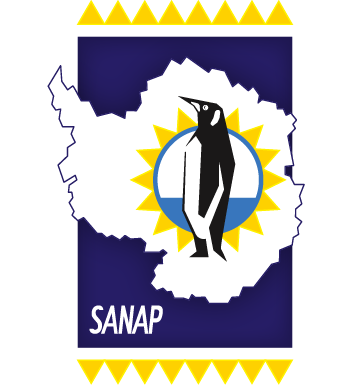

 freelance and volunteer work for SANAP. Alexander Oelofse is becoming a well-known name within the SANAP community. His
freelance and volunteer work for SANAP. Alexander Oelofse is becoming a well-known name within the SANAP community. His  realized that as freelancer he can be of great service to the community and to
realized that as freelancer he can be of great service to the community and to  that I would want to be in, or surrounded, by the ocean as much as possible. I wanted to study marine biology for a long time. Until job shadowing a marine biologist and realising much of the work would be lab-based. I couldn’t imagine that for myself. I then decided to pursue my other passion; photography. Being a member of the photographic society in high school sparked my interest. This led to me studying
that I would want to be in, or surrounded, by the ocean as much as possible. I wanted to study marine biology for a long time. Until job shadowing a marine biologist and realising much of the work would be lab-based. I couldn’t imagine that for myself. I then decided to pursue my other passion; photography. Being a member of the photographic society in high school sparked my interest. This led to me studying  While at University I already started trying to find a way onboard the S.A. Agulhas II. I had to see this stark, extreme and yet breathtakingly beautiful landscape for myself. It took a few years of applying, without succeeding, until I could get onboard the SEAmester III as a lecturer after my studies. Onboard students from various universities around South Africa get the opportunity to experience oceanographic research at its best, out in the field, onboard the
While at University I already started trying to find a way onboard the S.A. Agulhas II. I had to see this stark, extreme and yet breathtakingly beautiful landscape for myself. It took a few years of applying, without succeeding, until I could get onboard the SEAmester III as a lecturer after my studies. Onboard students from various universities around South Africa get the opportunity to experience oceanographic research at its best, out in the field, onboard the  He departed on the first leg of
He departed on the first leg of  “Seeing the ice shelf for the first time left me speechless. I became quite emotional, realising my dream had come true”.
“Seeing the ice shelf for the first time left me speechless. I became quite emotional, realising my dream had come true”.  “One of my highlights was getting to sit on the back of a snowmobile and traverse the snowy landscapes. Being the passenger allowed me to, despite the icy breeze, absorb the sublime landscapes that we passed through. This image was captured at 02:00 am. You could see the sun dip ever so slightly but never setting. I could get used to that. It made life seem endless, like there was no rush”
“One of my highlights was getting to sit on the back of a snowmobile and traverse the snowy landscapes. Being the passenger allowed me to, despite the icy breeze, absorb the sublime landscapes that we passed through. This image was captured at 02:00 am. You could see the sun dip ever so slightly but never setting. I could get used to that. It made life seem endless, like there was no rush”
 and became a
and became a  Islands since 2004 and have been fortunate to work with some of the legends as well as bright upcoming researchers (then students, now fully established and leading their own research groups). For my sins, I was appointed as Chief shore-based Scientist in 2006 (the first time that a woman held this position), and managed to get all people to relevant huts on time, even though we almost had to put together a rescue party to retrieve Valdon Smith and Sarette Slabber from Mixed Pickle (typical Marion Island bad weather meant that they could not walk over Azorella Kop). Thankfully the weather cleared, and all shore-based people made it back to the SA Agulhas I.
Islands since 2004 and have been fortunate to work with some of the legends as well as bright upcoming researchers (then students, now fully established and leading their own research groups). For my sins, I was appointed as Chief shore-based Scientist in 2006 (the first time that a woman held this position), and managed to get all people to relevant huts on time, even though we almost had to put together a rescue party to retrieve Valdon Smith and Sarette Slabber from Mixed Pickle (typical Marion Island bad weather meant that they could not walk over Azorella Kop). Thankfully the weather cleared, and all shore-based people made it back to the SA Agulhas I. flowers and pollen, and how do they get back to their hives? Are they really all female? Why are some species so successful while others are continuously threatened and faced with extinction; especially considering that our world is changing much faster than ever before?
flowers and pollen, and how do they get back to their hives? Are they really all female? Why are some species so successful while others are continuously threatened and faced with extinction; especially considering that our world is changing much faster than ever before? 
 or others impose on us; and it is crucial that we break through these (non-real) boundaries. STEM fields are a case in hand. This is especially true for woman, who traditionally were considered homemakers or child-carers. In STEM specifically, fields such as mathematics, physics and engineering, and traditionally more field-based disciplines such as zoology, botany, or oceanography, are seen as more suited to men (either because women were not traditionally considered as analytically strong, capable to work in the field, or for that matter, be away from home for any period of time). It is critical that any person (both men and women) should carefully consider what they enjoy, what their specific strengths are (be that a STEM career for a woman, or as a child carer / homemaker for a man), and then pursue that with all their strength and passion. Personally, I was initially directed into a field that I had no interest in (because I could not answer questions asked regarding where I would work if my husband lived in a small town), and from a personal perspective I strongly urge and support woman that want to step out of the “beaten track”, i.e., what is typically expected from you by society, and follow what they are passionate about.
or others impose on us; and it is crucial that we break through these (non-real) boundaries. STEM fields are a case in hand. This is especially true for woman, who traditionally were considered homemakers or child-carers. In STEM specifically, fields such as mathematics, physics and engineering, and traditionally more field-based disciplines such as zoology, botany, or oceanography, are seen as more suited to men (either because women were not traditionally considered as analytically strong, capable to work in the field, or for that matter, be away from home for any period of time). It is critical that any person (both men and women) should carefully consider what they enjoy, what their specific strengths are (be that a STEM career for a woman, or as a child carer / homemaker for a man), and then pursue that with all their strength and passion. Personally, I was initially directed into a field that I had no interest in (because I could not answer questions asked regarding where I would work if my husband lived in a small town), and from a personal perspective I strongly urge and support woman that want to step out of the “beaten track”, i.e., what is typically expected from you by society, and follow what they are passionate about. I am currently involved in a number of larger projects which aim to understand how species (individuals / populations) respond to change. One such project is on sub-Antarctic Marion Island (funded through the South African National Antarctic Programme), where we are assembling the full genomes of a number of macroinvertebrate species, with the ultimate aim to understand genes under selection, and how biotic and abiotic factors shape the genetic diversity on oceanic islands. In South Africa, and in collaboration with national (SANBI) and international partners (an NSF/NRF funded project), we are investigating how reptile species adapt to changing and transformed landscapes, and what the downstream impacts are on their genes, morphology and behaviour. Across the African continent, and in collaboration with the Research Centre in Biodiversity and Genetic Resources (Portugal), we are documenting the spatial genetic patterns in a number of economically important larger antelope species (such as roan- and sable antelope); our work here directly informs South African policies on translocations.
I am currently involved in a number of larger projects which aim to understand how species (individuals / populations) respond to change. One such project is on sub-Antarctic Marion Island (funded through the South African National Antarctic Programme), where we are assembling the full genomes of a number of macroinvertebrate species, with the ultimate aim to understand genes under selection, and how biotic and abiotic factors shape the genetic diversity on oceanic islands. In South Africa, and in collaboration with national (SANBI) and international partners (an NSF/NRF funded project), we are investigating how reptile species adapt to changing and transformed landscapes, and what the downstream impacts are on their genes, morphology and behaviour. Across the African continent, and in collaboration with the Research Centre in Biodiversity and Genetic Resources (Portugal), we are documenting the spatial genetic patterns in a number of economically important larger antelope species (such as roan- and sable antelope); our work here directly informs South African policies on translocations.


